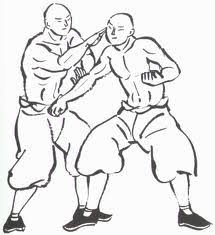The principles and concepts embedded in this unique training defy easy verbal expression; words alone cannot capture its profound meaning. Touch, with its inherent senses and feelings, surpasses the limitations of language. Stimulus through contact provides an experiential understanding, and words can merely hint at a state of awareness beyond the scope of this article.
Commonly known as pushing hands or Rou Shou/Tui Shou, sticky hands training delves into the art of sensitivity, feeling, and assimilating forces and energy. It transcends linguistic boundaries, relying on direct transmission through contact. Google translates “sense” as “to feel or experience something without being able to explain exactly how,” a sentiment crucial to this training.
Sticky hands training grants practitioners the ability to read an opponent’s intention in real-time, offering immediate information for responsive actions. The correct response hinges on the nuanced assimilation of intelligent information gathered during the initial contact—a process that takes mere fractions of a second.
To understand and control an opponent requires extensive hours of training, involving various partners and drills within the realm of sticky hands. Concepts like absorption, redirection, and neutralization emerge, forming the bedrock of this practice. This training serves as an information-gathering tool rather than a striking or manipulation tool.
In parallel, “Chi Gert” training emphasizes leg control, mirroring the principles of sticky hands. Sensitivity energy, distinct from impacting force, becomes a subtle force used for listening. The body’s decision-making processes, governed by responsiveness, are emphasized over the mind’s intent, termed as “Yi.”
The forces involved, whether for impacting or sticking, differ, each contributing to the overall application. Sequences involve assessing distancing, angles, degree of force, and the opponent’s limb usage. Maintaining balance becomes pivotal, as it is the foundation for movement, manipulation, and impact.
In the intricate dance of forces, sticky hands training evolves into an instantaneous response system, achieved through adherence, connection, and following. Pen Jing is utilized to disrupt an opponent’s balance, leaving no room for movement. The coordination of hands and legs, the glue and the follow, enables practitioners to redirect an opponent’s force, effectively doubling the power.
This swift, fraction-of-a-second process is achieved on first contact, paving the way for an explosive strike. Practitioners use various body parts for impact, guided by the four primary hands and the four corner hands in Tai Chi, coupled with energies like striking, pulling, pushing, and joint manipulation.
Intuition, developed through sticky hands training, becomes the instinctive guide, cultivated before engaging in striking or joint manipulation. Unlike slow, thoughtful processes, intuition is instantaneous and essential in self-defence situations.
The culmination is the development of the “sixth sense” in Tai Chi, combining refined senses to react correctly in response to touch-based information. This text aims to convey the intricate beauty of sticky hands training while acknowledging its profound nature that extends beyond mere words.
Reaction becomes a pivotal skill, wherein practitioners respond correctly to touch-based information rather than relying on conscious thought processes. Tai Chi training is often described as the cultivation of the “sixth sense,” an amalgamation of refined senses giving rise to a heightened intuitive understanding.
This sixth sense goes beyond mere reaction; it involves a deep understanding of combative concepts and principles. Sticky hands training serves as the crucible for cultivating this intuition through continuous contact. It distinguishes itself from a thought-driven process, where responses are dictated by preconceived notions. In-class training involves the use of the mind to collect information from training partners, while sticky hands training refines the art of assimilating the necessary tools for engagement.
It’s crucial to distinguish between the development of techniques and their actual usage. The goal of sticky hands training is the cultivation of intuitive energy through contact, specifically designed for real-world self-defence situations. This intuition becomes an instantaneous guide, allowing practitioners to navigate dynamic scenarios without the encumbrance of conscious reasoning.
The art of sticky hands extends beyond a mere physical practice; it delves into a realm where touch-based information is transformed into a nuanced, immediate response. It embodies the philosophy that martial arts are not merely about movement, manipulation, and impact but about the seamless integration of these elements into a harmonious, instinctive whole.
In conclusion, sticky hands training represents an intricate dance of forces, an art that transcends the limitations of language. It’s a journey where touch becomes the language of understanding, and the practitioner evolves into an artist who reads, interprets, and responds to the symphony of forces in the blink of an eye—a testament to the profound nature of this ancient martial art.


